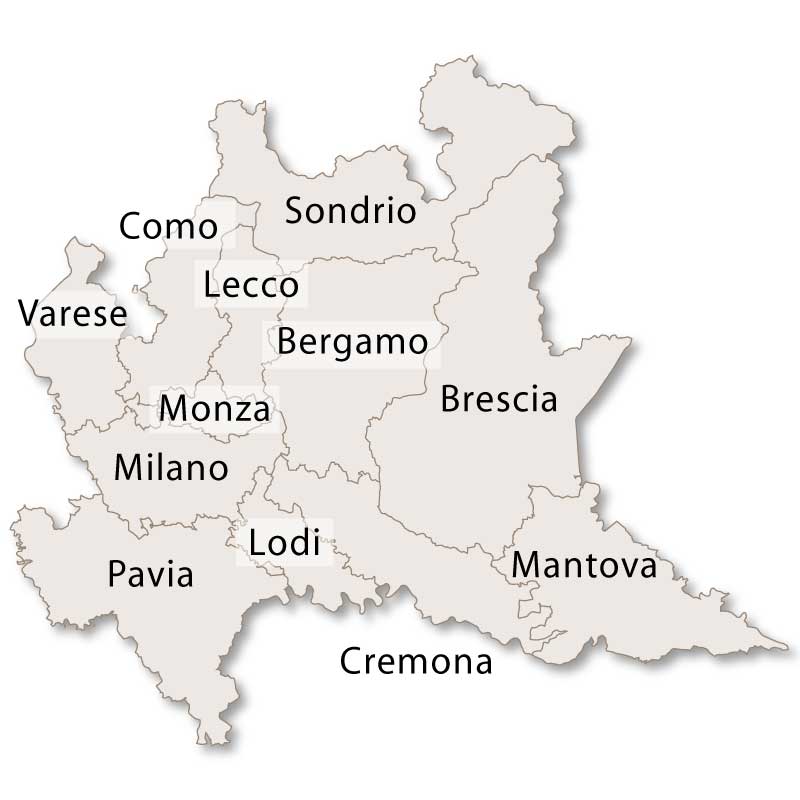
Nestled between the Adda and Brembo rivers in the province of Bergamo, Crespi d’Adda is one of the world’s best-preserved examples of a 19th-century workers’ village.
This extraordinary town was built from the ground up by the Crespi family, enlightened industrialists who sought to provide workers not only with employment but also with a dignified, structured way of life.
Walking through Crespi d’Adda is like stepping into a perfectly planned society, where factory, homes, church and services exist in architectural and social harmony.
Recognised as a UNESCO World Heritage Site in 1995, the village remains a symbol of industrial ambition fused with humanistic ideals and remains partially inhabited today.
Crespi d’Adda was founded in 1878 by Cristoforo Benigno Crespi, a cotton manufacturer who dreamt of creating a self-contained community for his employees.
Inspired by similar experiments in England and France, he designed a village where every element of life was accounted for, from work to worship to leisure.
His son Silvio Crespi continued the vision, expanding the village and integrating it with modern concepts of hygiene, education and urban planning.
Silvio even proposed an early version of the autostrada network in Italy and was instrumental in making Crespi d’Adda a national model for enlightened industrial urbanism.
At the centre of Crespi d’Adda stands the majestic cotton factory, a red-brick structure whose chimneys once puffed smoke that fuelled the town’s economy and rhythm.
This was not just a place of work but the nucleus around which daily life revolved, defining the social and temporal structure of the entire village.
The factory employed hundreds of workers, who lived in carefully planned housing just steps away from the gates, allowing for both proximity and productivity.
Though the factory ceased operations in the early 21st century, its architecture remains intact and continues to symbolise the industrial might of the Crespi family’s legacy.
One of the most remarkable aspects of Crespi d’Adda is its worker housing, laid out in neat rows of single-family homes with gardens, porches and uniform designs.
These houses provided privacy, stability and pride to the workers, standing in stark contrast to the crowded and unhealthy tenements common in many industrial cities of the time.
Each home was built with red brick, tiled roofs and modest but charming architectural details that reflected the workers’ dignity and the owners’ sense of social responsibility.
Larger, more elaborate villas were reserved for managers and technicians, illustrating a clear but respectful hierarchy within the community design.
Crespi d’Adda was not only about work, it was about community, and the village included every essential service a family might need in daily life.
There was a school for children, a hospital for the sick, a cooperative store, public baths and recreational areas, all designed to ensure physical and moral wellbeing.
At the spiritual heart of the town stood the Church of the Holy Family, whose large dome and prominent placement emphasised the role of faith and unity.
The Crespi family built these structures not just as amenities but as pillars of a self-sufficient society that fostered loyalty and harmony among its residents.
Just beyond the village lies the grand Crespi cemetery, where equality in death mirrored the village’s philosophy of dignity and unity in life.
Workers’ graves are arranged in uniform rows, each marked with identical crosses, showing no distinction in class or role among the deceased.
At the centre rises the imposing Crespi family mausoleum, an elaborate neo-Egyptian structure that reflects the family’s status and their ongoing presence in the village's memory.
This solemn space remains a powerful visual reminder of the ideals behind Crespi d’Adda and the deep connection between employer and worker in this unique setting.
Crespi d’Adda was designated a UNESCO World Heritage Site in 1995 for its exceptional value as a surviving example of a purpose-built industrial town.
It stands as a rare physical testimony to the 19th-century industrial era, combining architecture, urban planning and social reform in one coherent and intact environment.
The UNESCO recognition has helped preserve the village, sparking interest among historians, architects, sociologists and travellers from around the world.
Unlike many historic sites, Crespi d’Adda remains inhabited and alive, offering a rare glimpse into a model town that still functions in part as it did over a century ago.
Today, Crespi d’Adda is open to visitors year-round, with guided tours, exhibitions and walking routes that explore every facet of the town’s history and structure.
The Visitor Centre offers detailed maps, interactive displays and access to archives that illustrate how this seemingly simple town reshaped ideas of work and society.
Visitors can walk the peaceful streets, explore the church, admire the factory's majestic outline and stand before the mausoleum that watches over the town like a guardian.
Educational programs for schools and universities make the site a vital learning tool, blending lessons in history, architecture, ethics and economics.
The architecture of Crespi d’Adda is not lavish or ornamental, but rather carefully crafted to reflect function, order and respect for its inhabitants.
From the symmetry of its street plan to the uniformity of its housing blocks, the design expresses a deliberate balance between individuality and collective identity.
Buildings were constructed with durable materials and thoughtful detailing, with green spaces integrated throughout to enhance both aesthetics and quality of life.
This blend of practicality and utopian intent makes Crespi d’Adda a textbook example of how architecture can serve social ideals without sacrificing beauty or utility.
Crespi d’Adda is located in northern Italy between Bergamo and Milan, and is easily accessible by car or train, with the nearest stations in Capriate or Trezzo sull’Adda.
From there, it is a short walk or bike ride into the village, which is surrounded by green landscapes and the Adda River’s protected park area.
The best times to visit are spring and autumn, when the weather is pleasant and the village’s quiet charm can be fully appreciated without summer crowds.
Guided tours are available on weekends, and special events throughout the year include open-air exhibitions, historical reenactments and cultural festivals.
In an age when industrial progress often came at the cost of human wellbeing, Crespi d’Adda offered a different model, one based on respect, dignity and vision.
Though the factory has long since fallen silent, the spirit of the town remains deeply alive, preserved in bricks, gardens and the stories passed down through generations.
In the province of Bergamo, Crespi d’Adda stands as one of Italy’s most important and inspiring historical sites, blending social innovation with timeless design.
For visitors seeking a thoughtful and beautiful journey through Italy’s industrial and humanist past, this village offers an unforgettable and enlightening experience.

More Details



